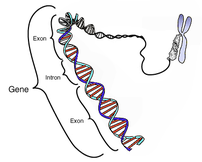[amazon_link asins=’B0029ZAH4I,1548477028,B00D98XPOI,B00KPQB2NS,B00U2WMWDO,B019XHYV50′ template=’ProductCarousel’ store=’finmeacur-20′ marketplace=’US’ link_id=’3530cd96-1140-11e8-ad6b-67c56acf8e2a’]
A faulty gene variant that can cause heart attack mortalities also potentially opens the way for improved treatment following such attacks.
……………………………………....CLICK & SEE
“It’s been known for some time that a defective ACE2 gene is associated with high blood pressure, but our research has also clearly linked one variant of this gene to a greater likelihood of mortality after heart attack,” said lead researcher Barry Palmer of Otago University, Christchurch.
“This is particularly in middle aged males who have acute coronary syndromes, or reduced flow of blood to the heart,” he added.
Otago scientists carried out the study over three years on a large cohort of 1,075 people (males and females) recruited from hospitals. They found, after adjusting for variables such as age, that male patients are almost twice as likely to die if they had one particular (defective) variant of the ACE2 gene.
“This is the first time ever that this variant of the ACE2 gene has been identified in terms of survivability,” said Palmer. “It will be useful in terms of other research we’re doing on tailoring heart disease treatment more accurately to the patient.”
“If we can identify those people at greater risk we may be able to do more earlier on in their treatment, and it’s easy enough to identify if someone has this variant of the gene.”
Males are more prone than females to the effects of the ACE2 gene variant which is linked to reduced survival because of their chromosomal make-up. That’s because males have only one copy in each cell of the ACE2 gene on the X chromosome and none on the Y chromosome, whereas females have two X chromosomes, according to an Otago release.
This means that if a male has a defective ACE2 gene variant there is no complementary chromosome which can compensate for that ineffective gene. Females have an alternative copy of the gene on their second X chromosome which can compensate for the defective ACE2 gene, and provide normal blood pressure to the heart.
In its normal form on the X chromosome the ACE2 gene produces an enzyme which controls blood pressure by influencing hormone levels. It is only when that gene is defective that blood pressure may increase.
The research was published in the October issue of the American Heart Journal.
You may click to see:->FAMILIAL HYPERCHOLESTEROLAEMIA Cardiovascular disease
Sources: The Times Of India
![Reblog this post [with Zemanta]](https://i0.wp.com/img.zemanta.com/reblog_e.png?w=580)






























